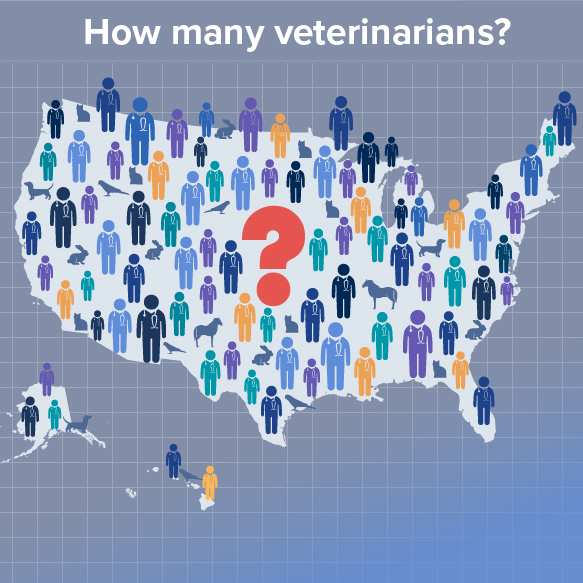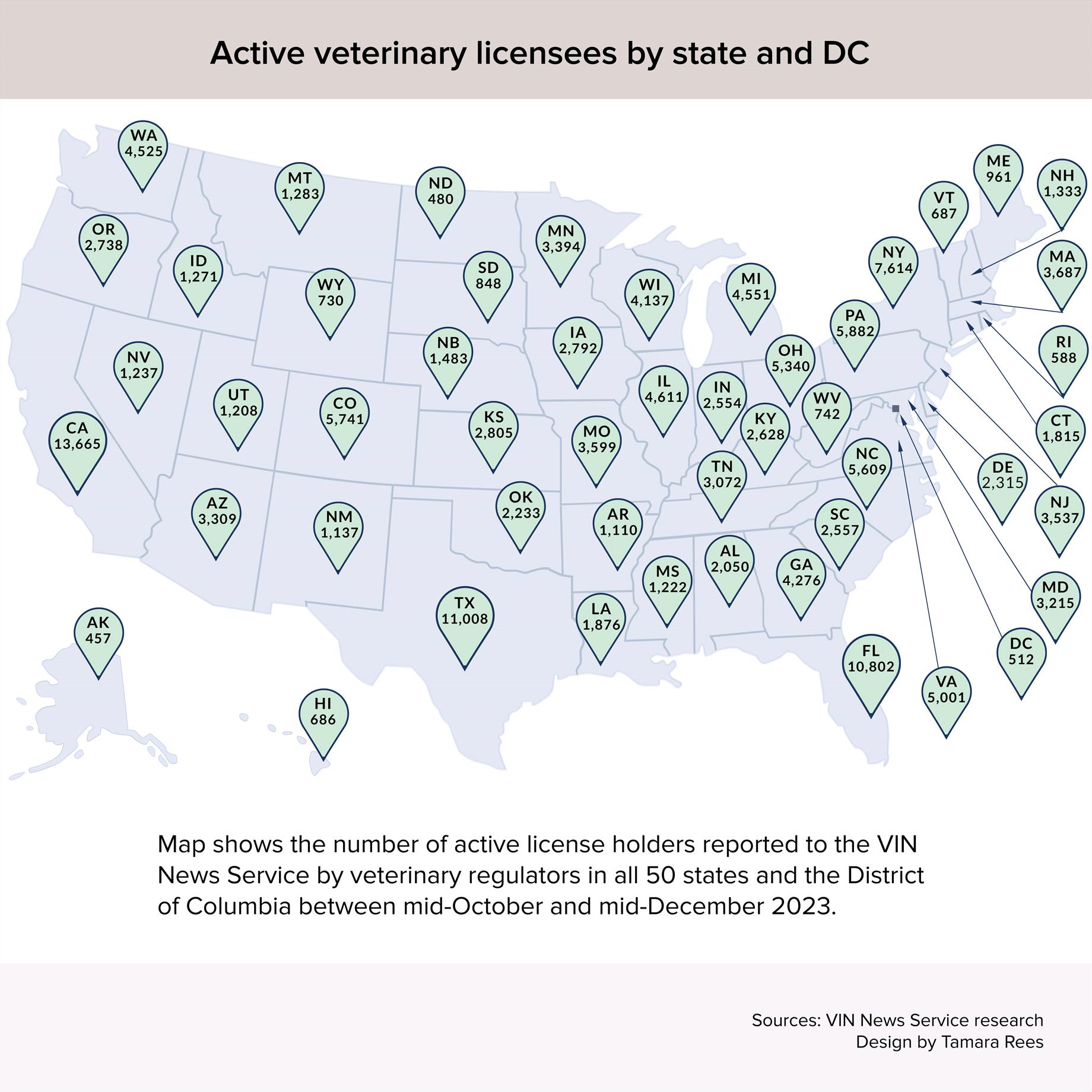Licensing_art_final

Ask veterinary employers or pet owners today whether there seems to be a scarcity of veterinarians in practice in the United States, and the answer likely will be an emphatic yes.
Nearly a dozen new veterinary schools are in the pipeline in part because educational institutions say they are trying to help meet increasing demand. If all the proposed programs come online, the existing number of schools in the U.S. — 33 — will jump by one-third.
Will that produce enough veterinarians? Too many? Exactly how many more veterinarians could stand to join the workforce is unclear, not the least because how many veterinarians there are already is a squishy number.
No official national head count exists.
According to the American Veterinary Medical Association, in 2022, there were 124,069 veterinarians in the country, of which 78,717 were in clinical practice.
The U.S. Bureau of Labor Statistics, for its part, counted 89,500 veterinarians in the workforce in 2022, and projected the number to grow 20% by 2032, to 107,200.
In the U.S., veterinarians are licensed to practice state by state. Curious what those state figures are, the VIN News Service contacted each jurisdiction to request their number of active licensees.
The snapshot, derived through phone calls and email correspondence with licensing personnel between mid-October and mid-December, produced this total from the 50 states and Washington, D.C.: 160,913.
The figure comes with several important caveats.
First, some individuals are counted more than once. That's because an unknown but likely substantial number are licensed to practice in more than one jurisdiction.
As extreme examples, Missouri and Tennessee share borders with eight states, Iowa and Kentucky with seven. Proximity to other states may make it more likely that doctors would practice across borders, perhaps in even more than two jurisdictions.
Veterinarians in northern border states (or in the southern tier of Canadian provinces) might practice across international boundaries. And relief veterinarians often travel to any of several jurisdictions that might or might not abut their home base.
States generally do not track how many of their licensees are licensed elsewhere.
In a poll conducted in October of members of the Veterinary Information Network, an online community for the profession and parent of the VIN News Service, 28% of 2,347 participants said they practice in two or more jurisdictions. If the share reflects the general population of veterinarians, that means more than one-quarter of licensees are counted more than once in the state-by-state tally.
The 160,913 figure includes veterinarians on restricted licenses, such as university faculty. The nature of the restriction, which varies by jurisdiction, might include prohibitions on practicing off-campus or outside of their faculty responsibilities.
The number also includes military personnel. In Maryland, where many military veterinarians come and go, the tally of licensees swings dramatically in the course of a year.
The count does not include those with "inactive" licenses. Again, the parameters of the category can vary, but for example, an inactive licensee in Minnesota typically is someone who plans to return to active practice in the state, perhaps following an internship or residency.
In sum, the 160,000-plus figure is overstated, although some factors that inflate the number may be at least partially offset by factors that undercount practitioners.
If the VIN Quick Poll results are representative of the general population of veterinarians, then 135 state licenses are held by approximately 100 veterinarians. Assuming this proportion, 161,000 veterinary licenses are held by roughly 119,000 individuals. Take it for what it's worth.
